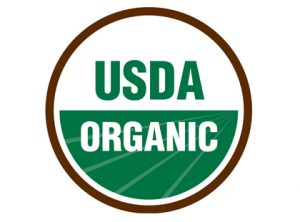Eating organic is the latest craze. But if you’re just a regular person scrolling through photos of your friends smoothie bowls on Instagram and occasionally consider buying a juicer to keep up with such food trends — let me help you.
First of all, “organic” refers to food that is grown without synthetic chemicals (pesticides, hormones, antibiotics, fertilizers, etc.). The opposite term for this that you’ll see on signs in the grocery store produce department (that you probably never even noticed before but now you will) is “conventional” which means food grown with those chemicals.
A couple years ago I did a monthly goal on my Gals with Goals blog where I spent one month eating all organic for every meal. Other than the potential health benefits, I wanted to understand what “organic” really meant and how to tell if food passes the “organic” test. In case you missed the info the first time around, here’s what you need to know about spotting organic food:
*****
-If a label says “organic” but there’s no organic logo on the packaging, then it’s <70% organic
-If a label says “made with organic ingredients” then the item is considered 70-94% organic
-If a label says “organic” and it has the organic logo (see below) then it’s 95% organic (majority of items with the logo)
-If a label says “100% organic” and it has the organic logo (see below) then it’s 100% organic (I have yet to find an item in this category)

*****
When it comes to buying fruits or vegetables, here’s how to read the label:
-If the number on the sticker starts with a 3 or 4 then it is conventionally grown and contains pesticides
-If the number starts with an 8 then it’s GMO (genetically modified organisms)
-If the number starts with a 9 then it is organic
Happy food shopping!




